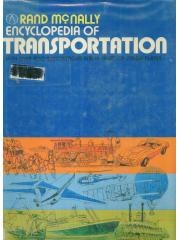
具体描述
Modern industrial society depends for its very existence on
the rapid and efficient movement of people and goods. The
transportation revolution which has made the development
of this society possible has taken place in the span of }ust
150 years. The evolution of our present modes of travel has
thus been rapid, but it has left vast areas still almost
untouched. There are, for example, some 200 million
automobiles in use thoughout the world, but over 90% of
them are in the countries of North America, Western Europe
and ]apan. There are other curious features as well,
Although transportation is one of the principal technologies
of our civilization, it would be interesting to speculate on the
percentage of passenger-miles still traveled on foot or on the
simplest of man s transportation aids, animals and bicycles.
It even remains true that in parts of the world a man may
bs born into the stone age and progress in his lifetime
through thousands of years of transportation history to pilot
a supersonic airplane.
The advance of transportation before the Industrial
Revolution has owed something to the life style of various
cultures as well as to their level of economic development
and technical capability.
The invention of the wheel some e,000 years ago, for
example, represented a notable advance, but the Incas
and other American Indian civilizations managed very
successfully without it.
In ancient times the Romans developed land transportation
to a peak of efficiency, largely by virtue of their remarkable
network of roads. But with the decline of the Empire the
roads decayed and were not replaced, and for some 1,500
years advances in transportation by land were limited to
marginal improvements to such features as harnessing and
wagon suspensions,
At sea, however, the situation was very different. Ancient
peoples made some remarkable voyages in the interests of
trade and exploration. The Phoenicians are reputed to have
sailed around Africa in 600 Be, while some 1,500 years later
Polynesians crossed the Pacific to New Zealand. and Vikings
took their long boats across the Atlantic to North America.
Remarkable as they were, these voyages were limited in
their implications for society and the world in general. By
contrast, the great voyages of discovery of the 15th and 16th
centuries, made possible by file development of more
effective rigs, stronger construction and greater size, vastly
extended man s horizons, his knowledge of the world, and
his contacl with other cultures. The growth of sea
transportation brought increased and wider trade and
communication, and it brought long-distance sea warfare
and colonization.
Technologically this revolution in transportation by sea was
complete by about 1600. Thereafter there were no qr :
significant advances in shipping for nearly 200 years, when
man s impatience and competitive instincts led to the
creation of the clipper ships. Sailing over twice as fast as
earlier freighters, clippers transported valuable cargoes
across oceans, and they carried determined prospectors to
the gold rushes in California and Australia, But their day
was short, because by then the modern mechanical world
作者简介
目录信息
读后感
评分
评分
评分
评分
用户评价
相关图书
本站所有内容均为互联网搜索引擎提供的公开搜索信息,本站不存储任何数据与内容,任何内容与数据均与本站无关,如有需要请联系相关搜索引擎包括但不限于百度,google,bing,sogou 等
© 2025 qciss.net All Rights Reserved. 小哈图书下载中心 版权所有





















